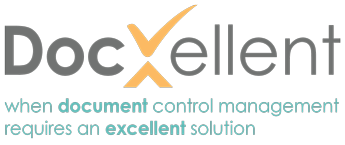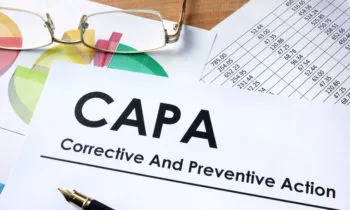
To stay ahead of the competition, personal care products company Grant Industries felt it was time to replace its manual document management system (DMS). As diligent as they were, the company knew they needed a better process than storing Word documents on a network drive.
Grant’s initiative to find an electronic DMS focused on four key areas: quality control for manufacturing, document control, standard operating procedures (SOP), and analytical procedures. Before choosing ENSUR, Grant looked at two or three different platforms. “ENSUR was the most affordable and the most straightforward,” recalls Harry Peck, Quality Assurance Manager at Grant Industries, Inc.
“Our setup was awesome,” recalls Peck. “Since there are only three of us leading the quality efforts, we leaned on DocXellent a lot. They walked us through everything. In fact, they went way beyond what they needed to do, to get us started.”
Looking back, Peck has some advice, “Get your documents organized before uploading them to ENSUR. Spending a little time up-front will save a lot of time later.” Grant ran a batch process to import over 2,000 documents into ENSUR. They found that they selected the wrong destination folder for some documents. Grant grouped documents by type—the way they were stored in folders on the network. As you can imagine with a manual system, some documents were not properly named. Others were not properly organized. So uploading them became confusing and Grant realized they had duplicates. Peck suggests, “Spend time to double- and triple-check the documents and file structure before uploading. Have others, who are close to the material, review your upload plan and make sure everything is correct before you migrate documents.”
Grant has been using ENSUR for six months. Recently, the company had their first big audit. Compared to the manual process they were using previously, they were able to prepare much faster. They were able to locate documents more quickly and more reliably. “We had a high degree of confidence going into the audit,” said Peck. “We knew every document, and every version of every document was in one place.” Grant easily produced a master list of documents for the auditors. “The level of transparency we provided gave them a high degree of confidence, too.” The auditors only asked to see a few documents. Peck and his team felt that if they were still using the manual process, the auditors might have probed more deeply.
“Confidence is a big thing for us,” says Peck. “It’s even more important to customers—especially when they, themselves, conduct audits.” This is common in the cosmetics industry. Companies don’t conduct trials, like pharmaceutical companies. In fact, Grant’s most recent audit was conducted by a potential customer. The ENSUR system demonstrated Grant’s dedication to quality and helped them earn the business. “Our investment in ENSUR quickly turned into revenue,” notes Peck. “It also enabled us to pursue a new, strategic vertical market.”
Grant could probably meet Current Good Manufacturing Practice (CGMP) regulations with its old, manual process. They might also pass customer audits. But when customers see how Grant uses ENSUR, they realize they don’t need to dig deeper. They have confidence that Grant has control and will be comfortable doing business.


























